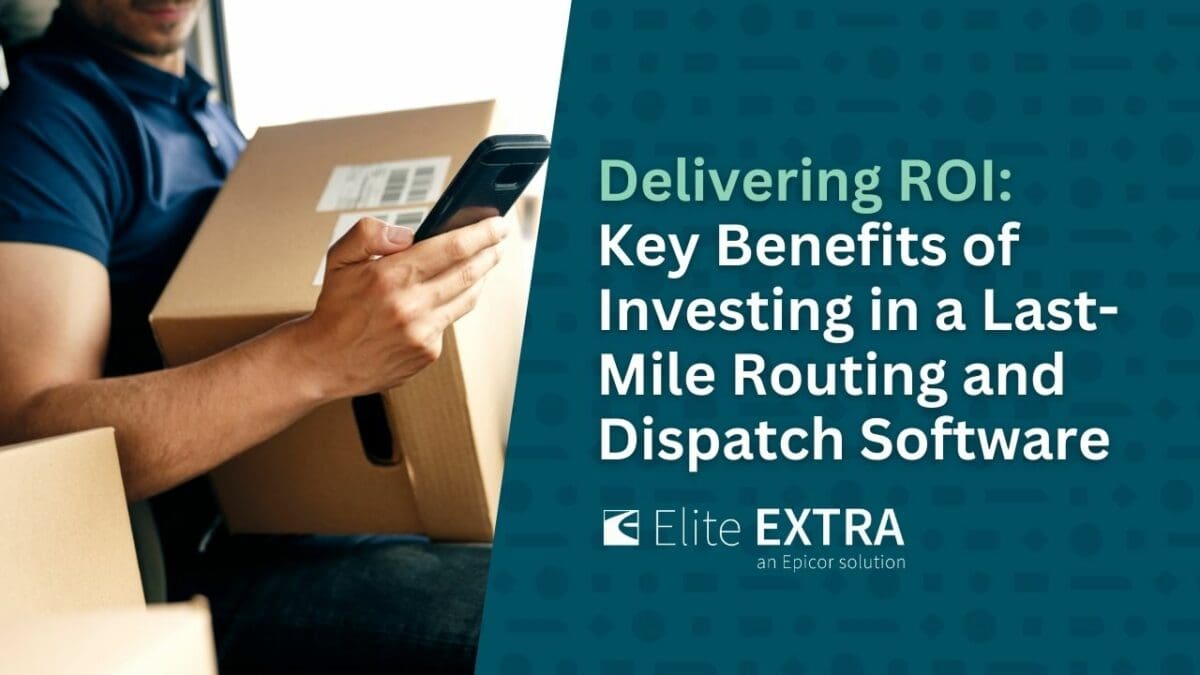
GPS technology has revolutionized the trucking industry—and it’s only getting better. Today’s advanced GPS for commercial trucks does far more than provide turn-by-turn directions. These systems can track vehicle speed, monitor driver behavior, issue safety alerts, and even integrate with cellular networks to deliver real-time location tracking.
As the logistics industry continues to grow, commercial fleets are under increasing pressure to improve delivery speed, reduce fuel costs, and boost overall efficiency. That’s where truck routing optimization comes in. Modern GPS systems now work hand-in-hand with route optimization software to analyze traffic patterns, minimize delays, and shave valuable minutes off every delivery.
But not all GPS and routing tools are created equal. With a wide range of features and capabilities on the market, it’s essential for fleet managers and logistics providers to evaluate their options carefully. In 2025 and beyond, adopting the right GPS and truck routing optimization tools isn’t just a tech upgrade—it’s a critical strategy to stay competitive and protect your bottom line.
Explore this article’s key sections quickly using the table of contents below.
- Understanding Commercial Truck GPS
- Breaking Down Route Optimization for Commercial Trucks
- Benefits of GPS + Route Optimization
- Challenges With Implementation
- How to Choose the Best GPS Optimization Software for Your Company
- Future Developments
Understanding Commercial Truck GPS: Beyond Basic Navigation
What Makes Commercial Truck GPS Different from Standard GPS?
Commercial GPS is different from consumer GPS in numerous ways—some critical to maintaining proper safety and function for a commercial vehicle. The following outlines the differences and comparative advantages of a commercial truck GPS system:
- Truck-Specific Routing: Commercial systems access routing information specific to larger vehicles such as truck-oriented dimensions for load limits, weight restrictions, bridge clearances, and unnecessary hazardous material routes. Consumer devices do not access this information.
- Safety Enhancements: These systems include lane departure alerts, traffic jam avoidance, and accident prevention features designed for larger trucks.
- Compliance Features: Many systems sync with ELD systems so that routing complies with hours of service requirements for easier logging.
- Fleet Connectivity: Commercial Truck GPS syncs with fleet management solutions that run extensive software systems for seamless integration, centralized management, and instantaneous information exchange—consumer GPS does not connect in this manner.
Key Features to Look for in Modern Commercial Truck GPS Systems
An ideal truck GPS must possess a range of reliable tools to meet the demands of on-the-road driving. According to the latest products on the market, the following would be expected:
- Live Traffic Updates: Rerouting based on current bottlenecks and expected delays.
- Truck-Specific Routing: Availability of trucking routes based on height, width, tonnage, and load.
- Driver Behavior Reporting: Ability to track when a driver is speeding, braking excessively, or idling, to encourage safe driving and better fuel consumption.
- Dispatcher to Driver Messaging Ability: Dispatcher can message a driver with instructions and updates.
- Fuel Efficient Mapping: Ability to assess and find the best routes for fuel efficiency and nearby compliant fuel stations.
- Integration Capabilities: APIs and other means of connectivity that allow integration with existing fleet management and dispatch systems.
These are all features fleet managers should evaluate based on their operational needs, fleet size, and budget.

The Science Behind Route Optimization for Commercial Trucks
What Goes into Route Optimization
It’s not as simple as taking the two furthest points and finding the shortest distance between them. There are a number of factors evaluated by modern algorithms all at once:
- Time Windows: The requirement for certain delivery and service time frames acknowledged.
- Vehicle Limitations: Determining what kind of truck it is, how much it can carry, and whether it has specialty equipment.
- Driver Accessibility: Understanding who can drive when, who’s on break, and hours-of-service regulations.
- Traffic Trends: Historical and current traffic data is taken into account to predict slowdowns and backups.
- Fuel Efficiency: Noting where fuel efficiency will be best based on topography, stop lights, and vehicle capabilities.
- Service Needs: Customer needs, delivery requests, loading docks.
The sheer number generated is astounding. A fleet of 10 trucks with just 20 stops creates thousands of billions of combinations, and that’s before even considering the variables to get to a route that’s guaranteed to be the best and safest.
Route Optimization Software Gives You A Return On Investment
There are many areas of your operation where you’ll see a return on investment from route optimization software.
- Fuel Savings: Average 10-30% fuel cost savings reported from improved routes and reduced idling.
- Added Capacity: 15-20% more capacity without added drivers or vehicles.
- Improved Service Levels: 30-40% reduction in late deliveries.
- Less Administrative Time: 25-75% savings in dispatch and planning time for dispatchers.
- Better Vehicle Wear and Tear: Reduced wear and tear on all vehicles from better planned routes and driving patterns.
- Lowered Insurance Rates: Certain insurance companies provide discounts for fleets that use state-of-the-art GPS and routing optimization technology because they have better safety records.
It costs a mid-sized fleet of 50 trucks about 3-6 months to pay for routing software, and after that, the savings are accrued in the long-term.
Deeper Dive into the Benefits of GPS for Commercial Trucks
Fleet managers often struggle to optimize their routing. When drivers waste fuel, it’s not only bad for the environment, but it’s bad for their pockets, too. Having the use of route optimization GPS for commercial trucks can help. With the right tools in place, fleets can optimize routes, minimize empty miles, and save fuel. Here’s how.
GPS Truck App Enhances Efficiency
While there’s no magic tool that can instantly solve your transportation problem, there are solutions that can help. The key is to look at your transportation network as a whole. Take into consideration everything from your delivery routes, to the size of your trucks, to the time windows you have for deliveries. As with all things in business, the more time and resources you put into this step, the better your results will be.
Reduced Fuel Cost
A more efficient route means lower fuel costs and more saved money your company can put toward other assets. When drivers accomplish more in less time using less fuel, you can also increase the number of deliveries you make each day. By doing so, your customers remain satisfied and you get more business.
Improved Customer Satisfaction
The first impression often counts most. Delivering on time is crucial because a late delivery can create a negative impression of your company and your brand. Studies show that customers are more likely to switch brands if there are delays or issues with delivery. You may even lose business if you aren’t on time or follow through. Making deliveries on time, however, does not mean you give up on efficiency.
Dive deeper into the world of route optimization by downloading our latest white papers for free!

Key Benefits of a Last-Mile Routing and Dispatch Software
Enhance your delivery ROI with Routing and Dispatch Software. Learn how to make your deliveries quick, accurate, and cost-effective.

Top 10 Features to Look for in a Last-Mile TMS Software
In this white paper, we dive into the top 10 features you should be looking for when selecting a last-mile TMS solution for your operations.
The Synergy Between Navigation and Planning
While GPS and routing optimization can exist independently of each other, using them together provides better results:
- Real-Time Routing: If something deviates from the plan, the program can quickly re-route and transmit the new directions to a driver’s GPS.
- More Accurate Routing Assessments: Information gathered from GPS is relayed back into the routing optimization program, allowing for adjusted assessments moving forward.
- Reciprocal Nature: When drivers confirm delivery, experience holdups, or take a different way, the GPS records this and lets the dispatchers know while simultaneously adjusting routing optimization parameters going forward.
- Proof of Service: GPS tracking timestamps arrival, time on site, and departure for billing and customer support needs.
This mutually beneficial connection enhances a feedback loop where success in one system boosts the other.
Challenges and Solutions of Real World Implementation
Implementing the technology is not without challenges:
- Driver Buy-in: Drivers may resist systems that appear to be “looking over their shoulder” and micromanaging. The solution is to include drivers in the rollout process and ensure they understand that the solutions are there to help them do their job easier and more safely.
- Compatibility with Existing Systems: Poor existing dispatch, accounting, or warehouse management systems prevent companies from adding new GPS and routing solutions. This is hardly a challenge anymore, however, as current logistics technology providers have robust APIs and connectors to popular existing business solutions.
- Volume of Data: The amount of data produced by these systems can be excessive, yet the best implementations come with customized dashboards and notification systems that highlight what can and needs to be done.
- Maintenance and Upgrades: Software and maps require constant renewal. This used to be a problem; however, since cloud software came into play, much of this is no longer an issue, as maps are updated in the background with no downtime.
Those companies that figure this out ahead of time implement much easier processes, and time to ROI is achieved much faster.
Higher Level Uses for GPS and Route Optimization
Predictive Analytics and Machine Learning
The newest iteration of top-tier systems employs predictive analytics and machine learning to assist in the following areas:
- Predicting Delivery Times: Providing algorithms for better time-of-delivery predictions based upon past completion history.
- Scheduling Preventative Maintenance: Making recommendations based upon vehicle data and other metrics to recommend maintenance sooner than later.
- Identifying Customer Trends: Realizing when customers typically order at a certain time to better facilitate scheduling efforts.
- Modeling Driver Trends: Leveraging past driving statistics to better train drivers.
These capabilities allow fleet managers to be proactive and react where needed instead of being the fire department that comes in to extinguish fires instead of preventing them from sparking in the first place.
Environmental Implications
Besides increased efficiency, these capabilities meet many sustainability objectives.
- Reduced Carbon Footprint: Reduced carbon emissions through more efficient routing and driving patterns.
- No Paper: No paper trail as digital manifests and proof of delivery exist.
- Alternative Fuel Routes: Additional routing capabilities for electric or natural gas vehicles that allow for charging/fueling options.
- Reduce Idling: Alerts and monitoring that prevent unnecessary idling reduce emissions and unnecessary expenses relative to excess fuel.
Companies have touted these capabilities in their corporate sustainability reports and for public relations purposes more than ever.
Choosing a GPS and Route Optimization Software
Assessing Criteria Connected to Fleet/Company Requirements
There are multiple factors to assess prior to choosing a solution.
- Operating Area Specifics: A delivery fleet working in a city requires different solutions from a long-haul operation or a fleet that works across different regions.
- Integration Needs: Assess how the solution will integrate with current systems of operation. Will it be accounting packages, inventory management systems, customer service applications, etc.
- Growth Potential: Is the solution scalable? Will it work for projected growth in the future?
- Cost of Entry: What is the cost of the hardware and subscription now as opposed to what is estimated for ROI?
Assessing current needs is a great way to save time and money to make sure technological capability does not exceed requirements.
Important Questions to Ask Potential Suppliers
After determining a few potential suppliers/vendors, these questions should be asked:
- What’s the average implementation timeline and what resources need to be devoted from my company?
- How often are maps and software upgrades, what’s the process?
- What training is available for drivers and back-office support?
- Do you have any case studies or references that align with my company’s profile?
- What security measures are in place around my operational data as well as customer data?
- What do you do when there is no cellular coverage for a backup?
- Where do you see your product development going in the next 12-24 months?
The answers will not only reflect how well the solution works but how well the provider bets on improvement and ongoing service.

Future Developments of Commercial Truck GPS and Routing
Greater Integration with Supply Chain Software
The future of software will sync even further with the rest of the supply chain:
- Comprehensive Visibility: From producer to consumer and all points in-between plus carriers—visibility in real time.
- Inventory Anticipation: Anticipatory knowledge of what inventory will be needed based upon anticipated deliveries and historical data.
- Appointment Rescheduling: Ability to automatically reschedule passenger and freight pickup/drop-off appointments based on fleet condition and availability.
- Blockchain Accountability: Chain of custody and compliance can be logged and acknowledged via blockchain tracking.
Logistics will become just one part of a much larger holistic chain that moves goods and info more easily than ever.
Final Thoughts
Route optimization and GPS for commercial trucks can help save fuel, time, and money by reducing miles traveled and fuel use. Moreover, GPS-integrated route optimization systems constantly monitor a truck’s speed, driver’s location, and traffic conditions, then adjust routes accordingly, reducing miles traveled and fuel costs.
To learn about all these features and more, contact Elite EXTRA today!
Sources
https://transportgeography.org/contents/chapter8/urban-transport-challenges/







